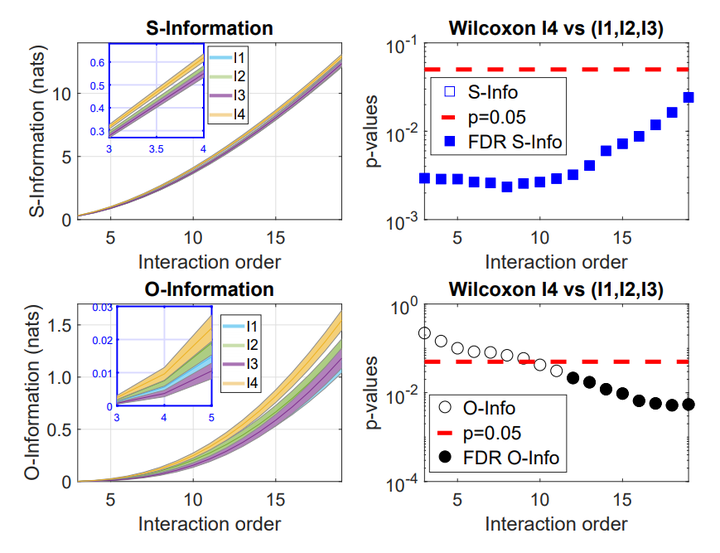
Abstract
Brain interdependencies can be studied either from a structural/anatomical perspective (‘structural connectivity’, SC) or by considering statistical interdependencies (‘functional connectivity’, FC). Interestingly, while SC is typically pairwise (white-matter fibers start in a certain region and arrive at another), FC is not; however, most FC analyses focus only on pairwise statistics and neglect high-order interactions. A promising tool to study high-order interdependencies is the recently proposed O-Information, which can quantify the intrinsic statistical synergy and redundancy in groups of three or more interacting variables. In this paper we used the O-Information to investigate how high-order statistical interdependencies are affected by age. For this, we analised functional magnetic resonance imaging (fMRI) data at rest obtained from 164 healthy participants, ranging from 10 to 80 years old. Our results show that older subjects (age ranging from 60 to 80 years) exhibit a higher predominance of redundant dependencies than younger subjects; moreover, this effect seems to be pervasive, taking place at all interaction orders. Additionally, we found that these effects are highly heterogeneous across brain regions, and suggest the existence of a ‘redundancy core’ formed by the prefrontal and motor cortices, thus involving functions such as working memory, executive and motor functions. Our methodology to assess high-order interdependencies in fMRI data has unlimited applications. The code to calculate these metrics is freely available.